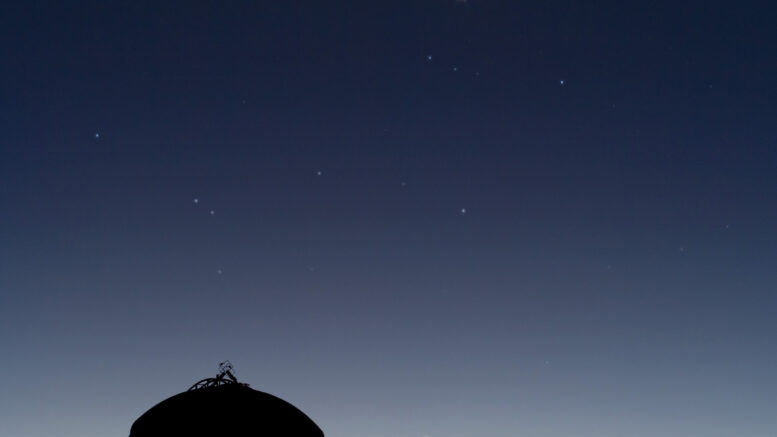In astronomy, a conjunction occurs when two astronomical objects or spacecraft have either the same right ascension or the same ecliptic longitude, usually as observed from Earth. Times and details depend only very slightly on the observer’s location on the Earth’s surface, with the differences being greatest for conjunctions involving the Moon because of its relative closeness, but even for the Moon the time of a conjunction never differs by more than a few hours.
Conjunctions involve either two objects in the Solar System or one object in the Solar System and a more distant object, such as a star. This is because this is an apparent phenomenon caused by the observer’s perspective: the two objects involved are not actually close to one another in space. Conjunctions between two bright objects close to the ecliptic, such as two bright planets, can be seen with the naked eye.
More generally, in the particular case of two planets, it means that they merely have the same right ascension (and hence the same hour angle). This is called conjunction in right ascension. However, there is also the term conjunction in ecliptic longitude. At such conjunction both objects have the same ecliptic longitude. Conjunction in right ascension and conjunction in ecliptic longitude do not normally take place at the same time, but in most cases nearly at the same time.
There are instances of triple conjunctions, at which time it is possible that a conjunction only in right ascension (or ecliptic length) occurs. At the time of conjunction – it does not matter if in right ascension or in ecliptic longitude – the involved planets are close together upon the celestial sphere. In the vast majority of such cases, one of the planets will appear to pass north or south of the other.
For a list of upcoming events that include planets for 2020 to 2023, check out this article.

Leave a comment